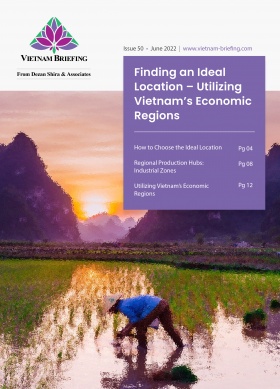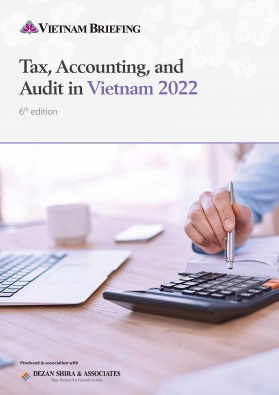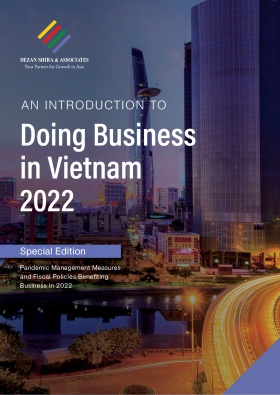What No COVID-Zero in China Could Mean for Vietnam
After days of unrest in some of China’s biggest cities, the Chinese government has announced it is relaxing COVID-19 protocols. This may be the first sign that China is returning to business as usual and reopening its economy. This could have both good and bad outcomes for Vietnam.
It was almost three years ago to the day that the first case of COVID-19 was reported in Wuhan, China. Three months later, the World Health Organization declared the outbreak a pandemic and that action should be taken to stymie the spread of the virus.
In these initial stages, Vietnam took a similar approach to China. It closed its borders, isolated people diagnosed with COVID-19, and implemented wide scale lockdowns when cases were found in the community.
When the virus peaked, factories implemented closed loop production, with workers sleeping on site and subjected to regular COVID-19 testing.
Unlike China, however, Vietnam implemented an aggressive vaccination campaign. It reached out around the world seeking donated vaccines and set about inoculating its population.
Furthermore, when authorities were satisfied that Vietnam was as well prepared as it could be, Vietnam reopened its borders. This was almost a year ago. China still has not.
Given they are neighbours, the contradictory policies have had implications on both countries. When China reopens, as it seems on track to do, the impact will be felt on both sides of the border in a broad range of sectors.
FDI inflows could slow down
In the first 11 months of 2022, Vietnam registered a record US$25 billion in foreign direct investment (FDI) partially reflecting changing attitudes toward China among foreign firms.In recent years, rising wages and a trade war with the US have put a dampener on doing business in China. As a result, many firms were already looking to diversify their supply chains out of the country before the first cases of COVID-19 were even diagnosed.
COVID-zero, however, further exacerbated this sentiment with many multinational firms severely affected by the policy.
Taiwan’s Foxconn, one of Apple’s key suppliers, for example, has been at the epicentre of unrest over COVID-19 lockdowns in China. By some estimates, unrest at its factory in Zhengzhou saw its iPhone production capacity reduced by 30 percent.
Unsurprisingly, Foxconn, is already in the process of moving some production out of China due to the impact of zero-COVID policies. Foxconn announced in August that it would be spending an additional US$300 million to ramp up production in Vietnam.
This is significant and part of a growing trend.
A European Chamber of Commerce in Vietnam survey, earlier this year, found that 17 percent of respondents had moved at least part of their operations from China to Vietnam already.
As the pressure of manufacturing in China has mounted, even homegrown Chinese firms have found benefits in relocating south.
China’s own Xiaomi, for example, moved part of its production to a US$80 million factory in Vietnam’s Thai Nguyen due to the higher cost of delivery and logistics as a result of the COVID-19 pandemic.
And the list goes on.
Still, it can be assumed that the pandemic related component of the diversification strategies of multinationals may slow if COVID-zero in China is dismantled.
Supply chains may start to run smoother
Vietnam’s manufacturing industry is overly represented in the assembly of goods. Yet, many of the parts and raw materials used in Vietnamese exports are imported.
In 2018, the Japan External Trade Organization found that Vietnam had a localization rate of just 34 percent with regard to spare parts, components, and materials. For contrast, that figure was 68 percent for China and 57 percent for Thailand. Ergo, the Vietnamese industry is heavily dependent on China.
In fact, China is Vietnam’s biggest source of imports by far. In 2021, Vietnam imported just over US$100 billion worth of goods from China. This included raw materials for the textile, garment, leather, and shoe industries to the tune of US$13.7 billion.
But cross border trade has struggled under China’s COVID-zero. Not only have factories struggled to produce the parts and materials Vietnam needs, but getting them across the border has also been problematic.
Back in March, some companies reported delays of two to four weeks in shipments crossing to Vietnam from China. This significantly impacted a number of businesses as they waited for vital parts to arrive.
Further, goods being exported to China from Vietnam have also experienced lengthy delays. In December 2021, the BBC reported that there were up to 6,000 trucks stuck at the border waiting to cross into China with Chinese customs working at just 20-25 percent of capacity.
As COVID-zero draws to an end, these border issues should come to an end too.
Tourism could receive a welcome boost
Finally, tourism should expect a welcome boost if travel restrictions between China and Vietnam are eased.
Just days ago, Vietnam Airlines announced it would be resuming flights between the two countries after almost three years’ suspension.
This should be welcome news for Vietnam’s tourism sector. In 2019, Chinese tourists accounted for 5.8 million visitors to Vietnam or about 30 percent of the total of 18 million visitors that made their way to the Southeast Asian nation that year.
For contrast, in the first 11 months of 2022, Vietnam welcomed just 54,000 visitors from China, according to figures released by the Vietnam National Administration of Tourism and the General Office of Statistics.
With eased border restrictions, tourism and hospitality business in Vietnam’s key tourism hotspots, particularly around central Vietnam where tourism is a key industry, should be able to breathe a sigh of relief.
‘Normal’ will still take some time
But though reducing COVID-zero restriction in China may hold promise for Vietnam, COVID-zero is not gone yet. The transition period will be challenging and initial signs suggest there may be some confusion surrounding what policies are now in place and how they will be implemented.
Furthermore, as China comes out of heavy restrictions, just like in most other countries (Vietnam, for example), there is also likely to be a wave of new cases of COVID-19. Depending on what policy responses there are to an extended outbreak, there could also be further implications for cross-border trade, tourism, and FDI flows.
Suffice to say, this may be the beginning of the end to Vietnam’s COVID-zero woes as regards its neighbor, but there is awhile to go before business on Asia’s east coast can settle into a ‘new normal’.
About Us
Vietnam Briefing is published by Asia Briefing, a subsidiary of Dezan Shira & Associates. We produce material for foreign investors throughout Eurasia, including ASEAN, China, India, Indonesia, Russia & the Silk Road. For editorial matters please contact us here and for a complimentary subscription to our products, please click here.
Dezan Shira & Associates provide business intelligence, due diligence, legal, tax and advisory services throughout the Vietnam and the Asian region. We maintain offices in Hanoi and Ho Chi Minh City, as well as throughout China, South-East Asia, India, and Russia. For assistance with investments into Vietnam please contact us at vietnam@dezshira.com or visit us at www.dezshira.com
- Previous Article Foreign Worker Reports are Due January 5
- Next Article Customs, Trade Reform: the EVFTA Two Years in Review









